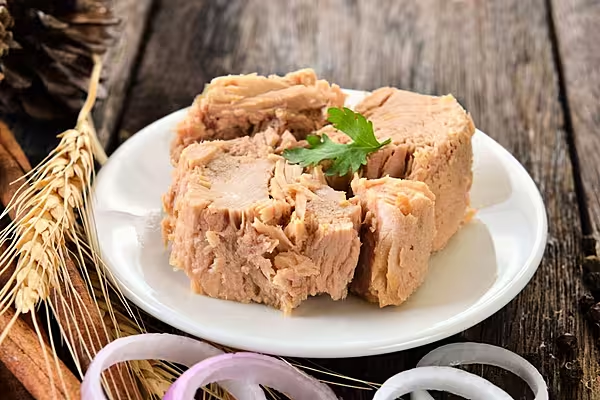Japan's tuna market, the world's largest, is taking an outsized hit from the coronavirus pandemic, pressuring restaurants and wholesalers at Tokyo's sprawling Toyosu fish market to adapt to survive.
Businesses had hoped for more activity after Japan lifted its state of emergency in late May, but big events such as shareholder meetings and wedding banquets have remained on hold while many Japanese are still wary of going to restaurants.
Demand for fresh fish, especially the so-called 'king of sushi' bluefin tuna, has slumped as the pandemic wiped out orders for events.
Tuna Prices
Tuna prices dropped 8.4% in July from a year earlier, far steeper than the 1.5% annual fall in overall fresh fish prices, government data showed.
"Our sales are down by 60% compared to last August," said 47-year old Yasuyuki Shimahara, owner of an 'izakaya' dining bar specialising in tuna dishes in Tokyo's Kanda business area.
Shimahara, who opened his restaurant a year ago, started selling boxes of frozen tuna online in July to offset the hit to his businesses from the drop in customers.
He has so far received about 200 orders for the 5,500 yen ($52) box, which contains two pieces of 'akami' red meat tuna, and plans to start selling 8,500 yen boxes of more expensive 'chutoro' medium fatty tuna later in September.
While some customers buy the boxes as gifts for elderly family members, others are put off by the lengthy process of defrosting tuna, which involves leaving the fish in the fridge for several hours.
Kimio Amano, a 46-year old wholesaler at Toyosu, the world's largest fish market, said the increase in household consumption had not been enough to make up for lost business elsewhere.
'A Modest Rebound'
While there was a modest rebound in demand from restaurants for his fish after the state of emergency was lifted, he said big events and business from upscale dining bars, such as those in Tokyo's Ginza area, had been slow to resume.
That meant he was losing out on big orders, since customers tended to buy 30 to 40 kilograms (kgs) of tuna at a time for events such as wedding banquets and funerals, while sushi restaurants and izakayas generally placed smaller orders of around 10kgs and 6kgs respectively.
"It was pretty good at the beginning of July, but it stalled again from there," said Amano, in his bluefin tuna stall, after cutting up a 158 kilogram tuna with a huge, sword-like knife.
Amano, who sells mostly high-quality fresh and frozen tuna, said he had seen 30-40% less business than usual over the past month due to low demand from major hotels and restaurants at Tokyo's Haneda airport.
But he said there had been a slight pickup in overseas orders recently, with those from Russia in particular returning to pre-pandemic levels.
Staying In Business
Japan's imports of high-value tuna jumped 10% in 2019, while bluefin imports surged 13% as businesses prepared for big events like the 2020 Olympics, which was later postponed, the Food and Agriculture Organisation of the United Nations said.
In 2018, global imports of tuna were valued at $15.7 billion, while Japan was the biggest tuna importer that year.
But the pandemic has hit the industry hard and Japan's tuna imports fell 18% in the first six months of 2020 from a year earlier, finance ministry data showed. With people still wary of going out, the outlook is unlikely to change soon.
Tokyo's sushi restaurants, which tend to be popular among people from other regions, are getting fewer visitors from outside the capital, said Toshio Katsukawa, associate professor at the Tokyo University of Marine Science and Technology.
"If you talk with people from such shops, (they say) nobody is coming because travel to Tokyo has been cancelled," he said.
Special Occasions
Kana Kikuchi, who works at a life insurer, said the Japanese tend to go out for sushi to celebrate special occasions.
But, in late August, she took her daughter to Shimahara's tuna restaurant on an ordinary week night just to show support.
"We're coming so that the restaurant can stay in business," said the 45-year-old.
Kikuchi said she does not usually eat tuna at home because of the challenging defrosting process.
To help customers like her, Shimahara has added instruction booklets in the boxes sold online on how best to defrost and serve the tuna.
News by Reuters edited by Donna Ahern, Checkout. Click subscribe to sign up for the Checkout print edition.









